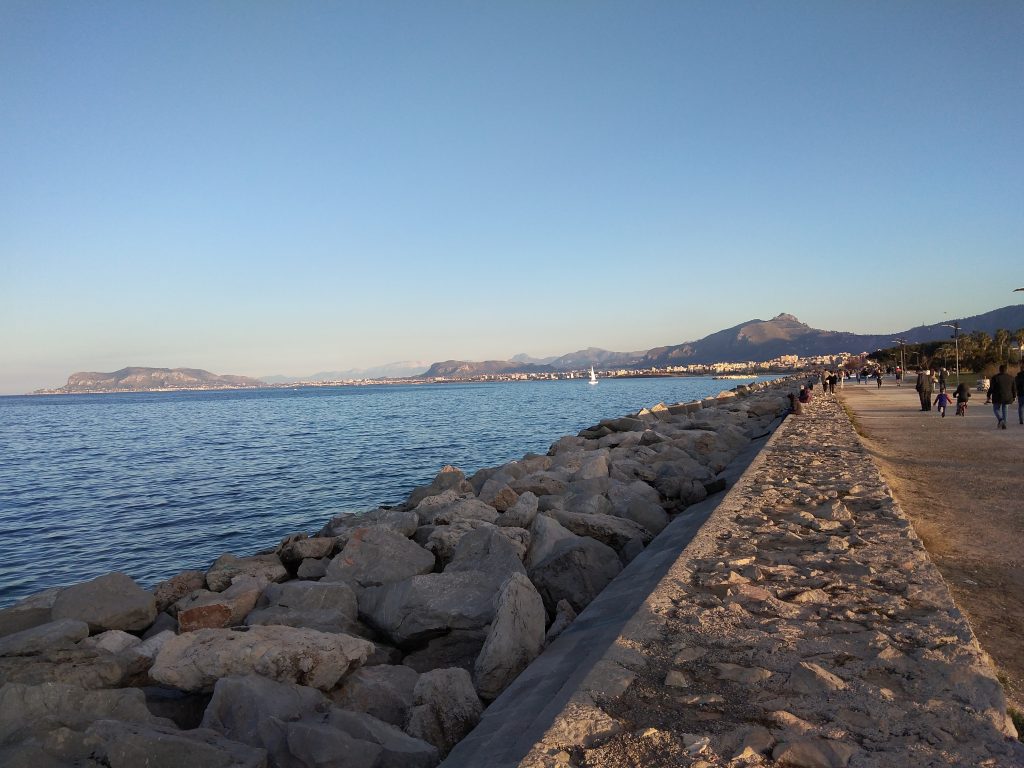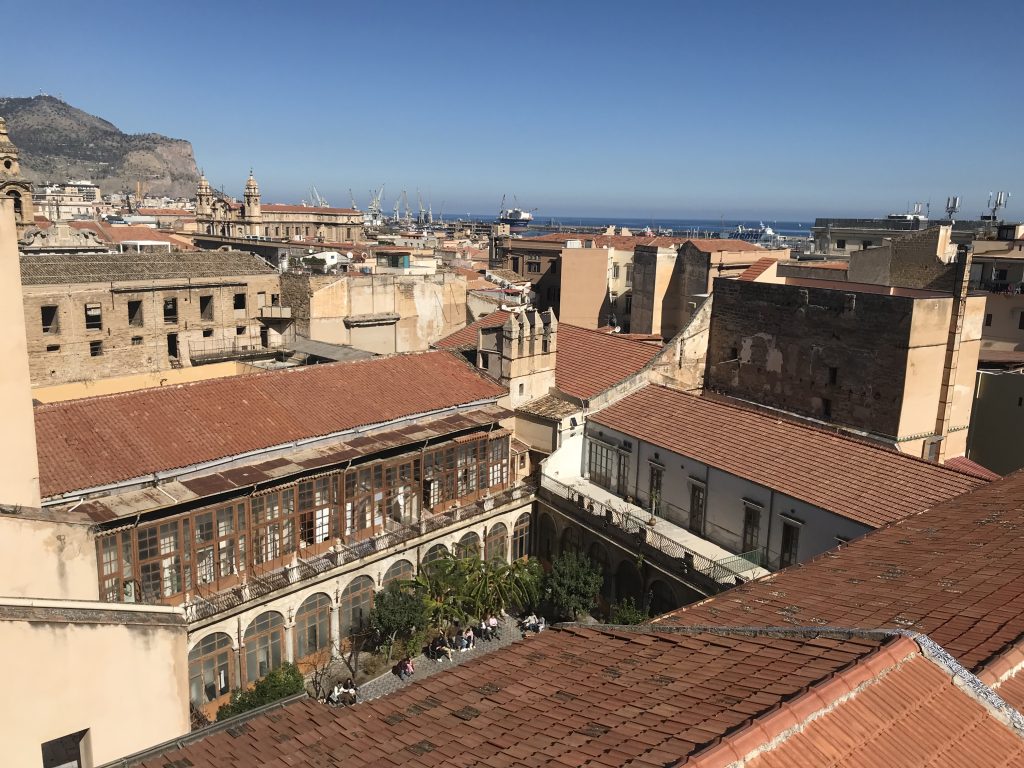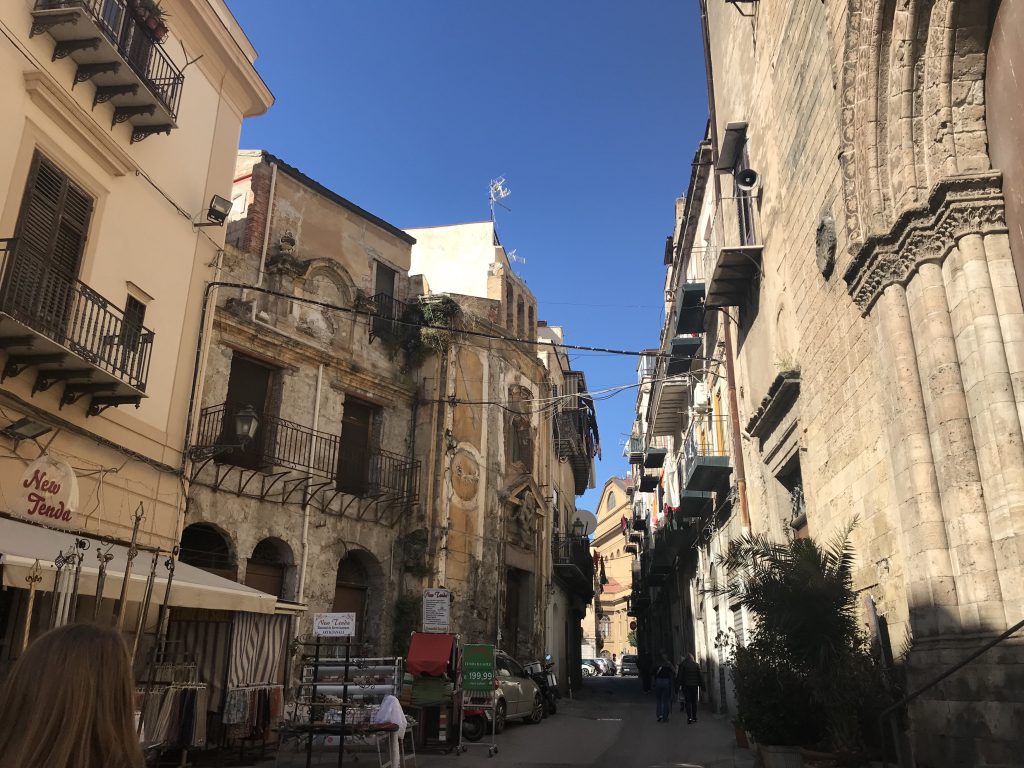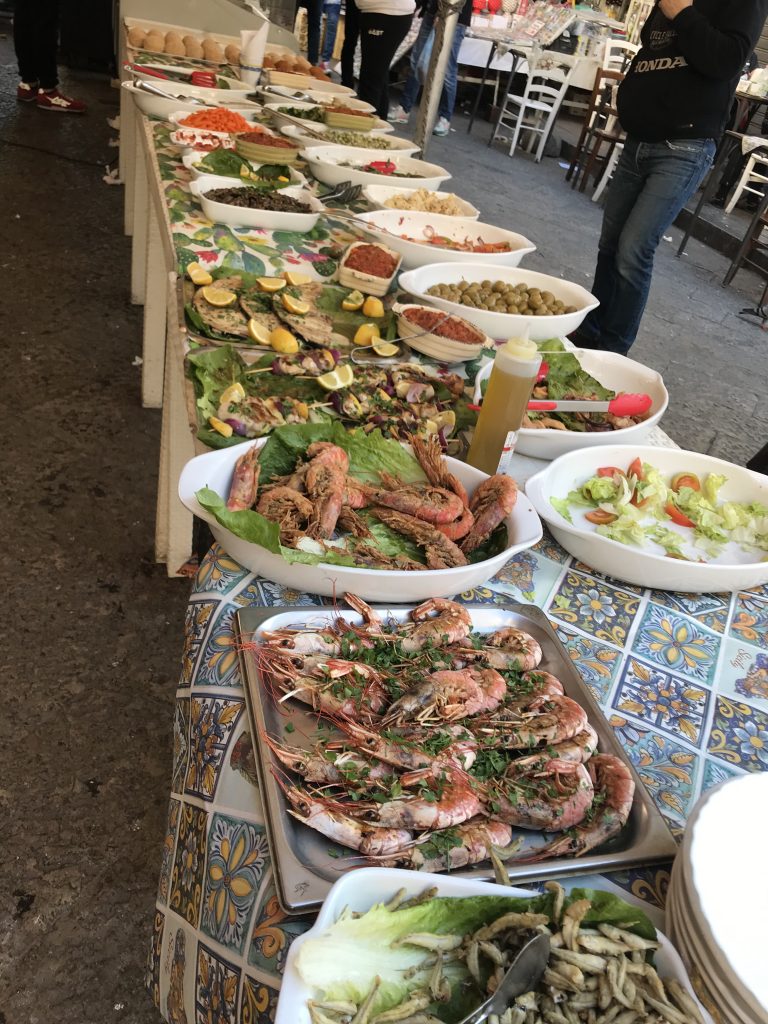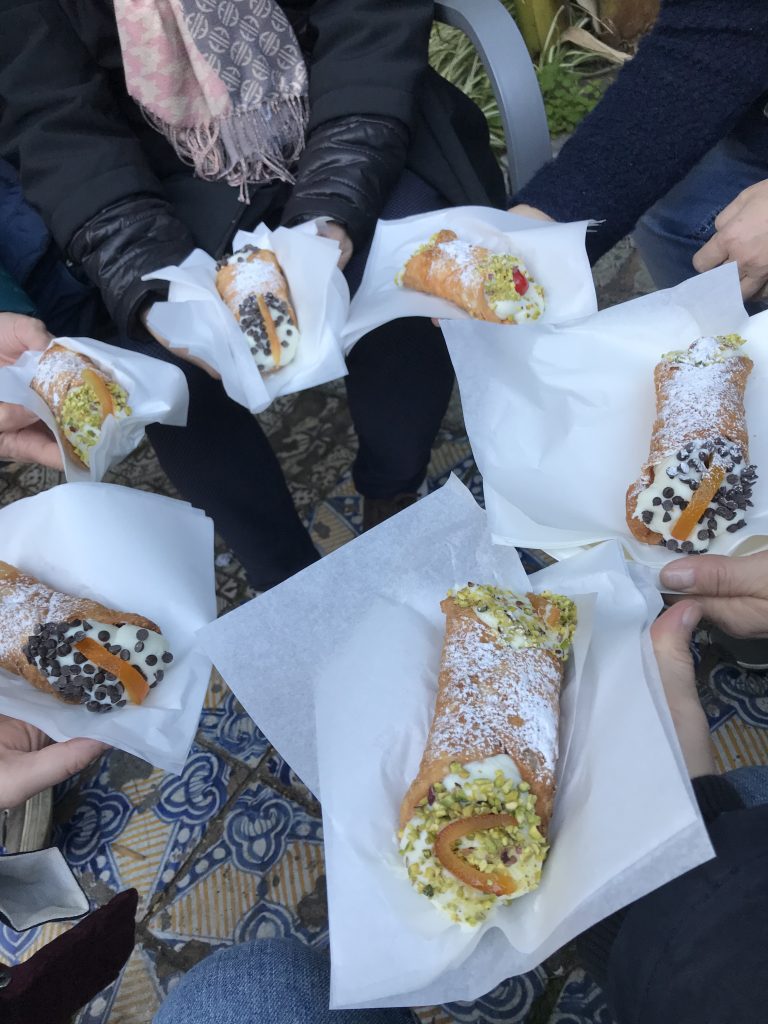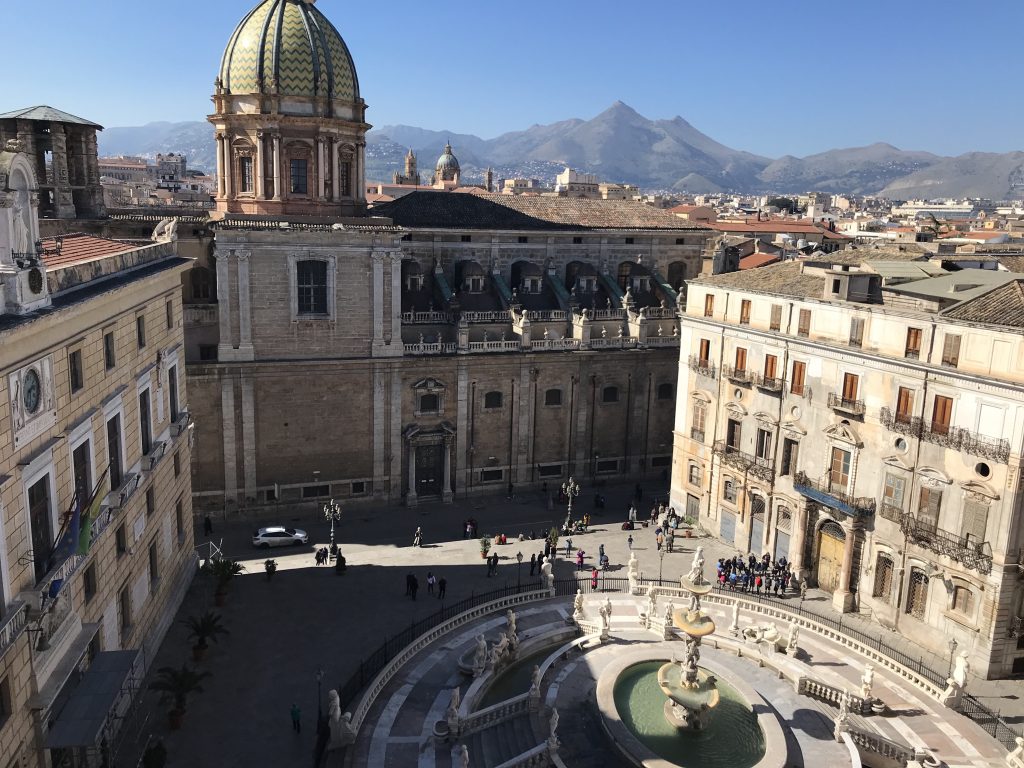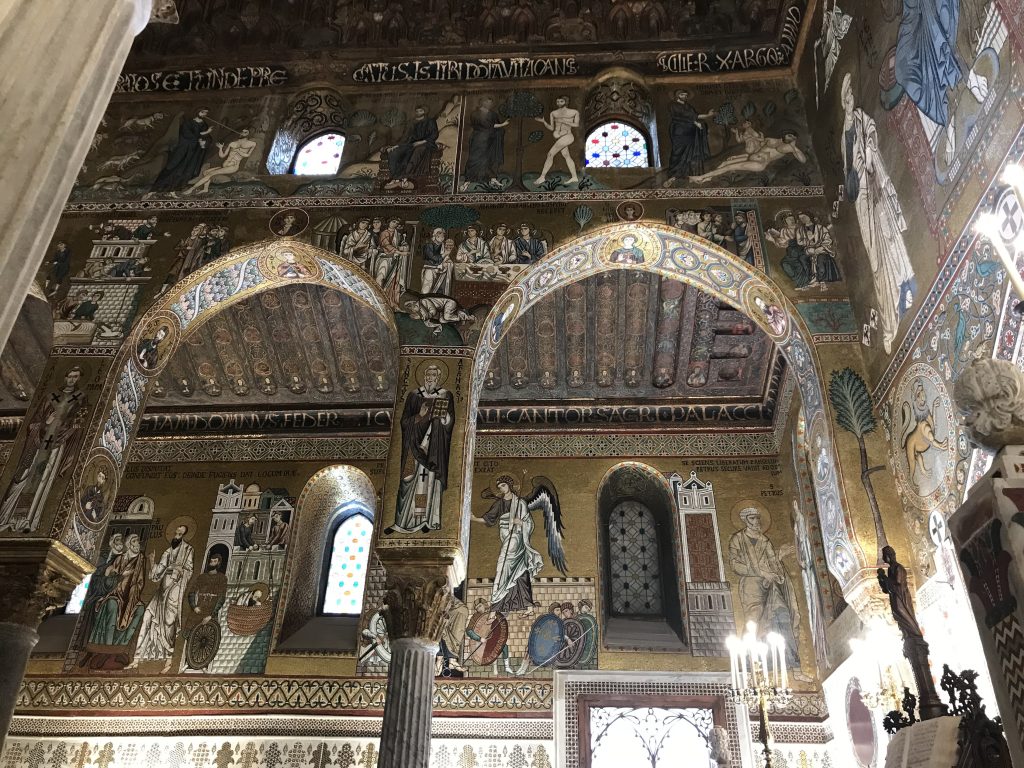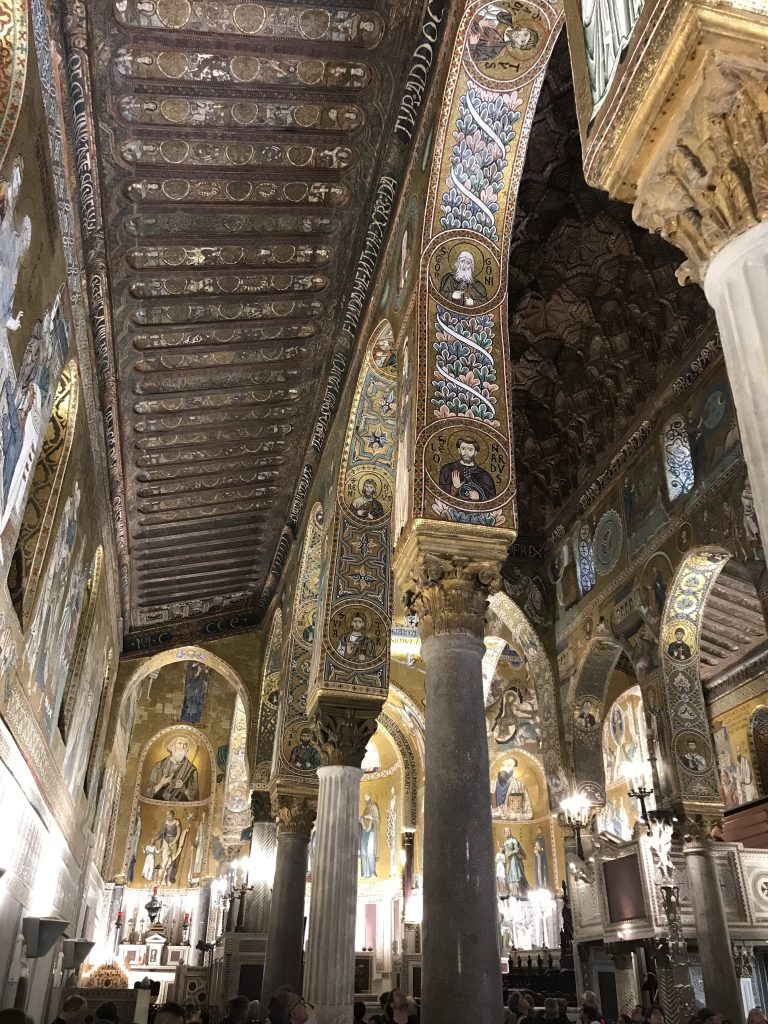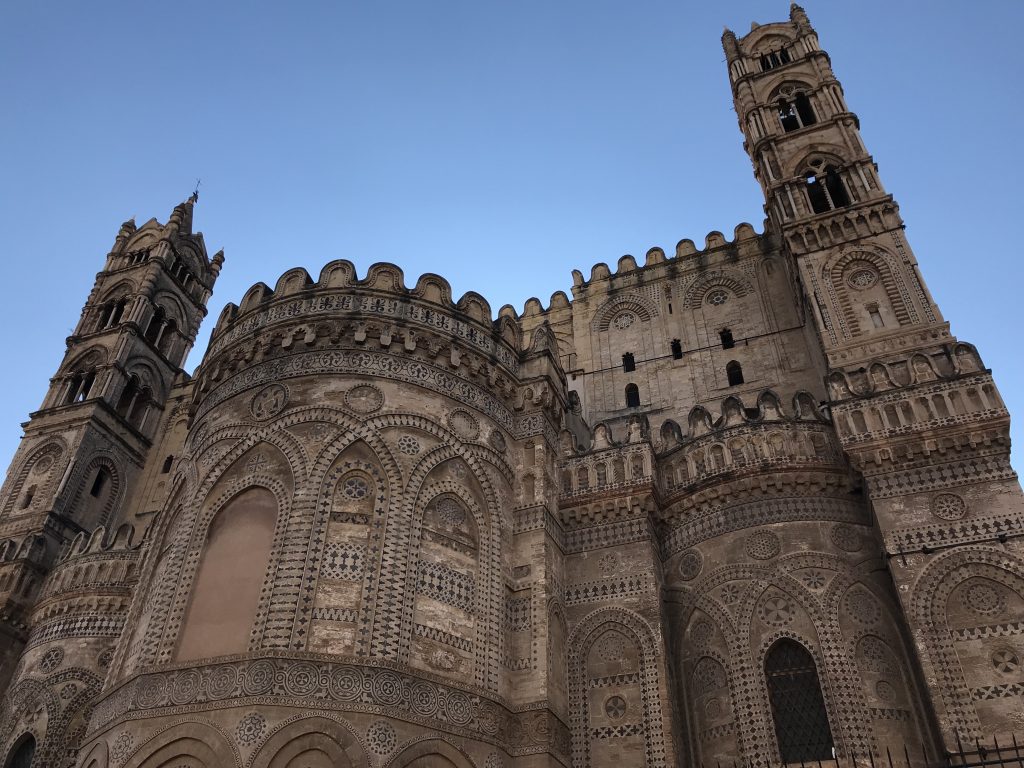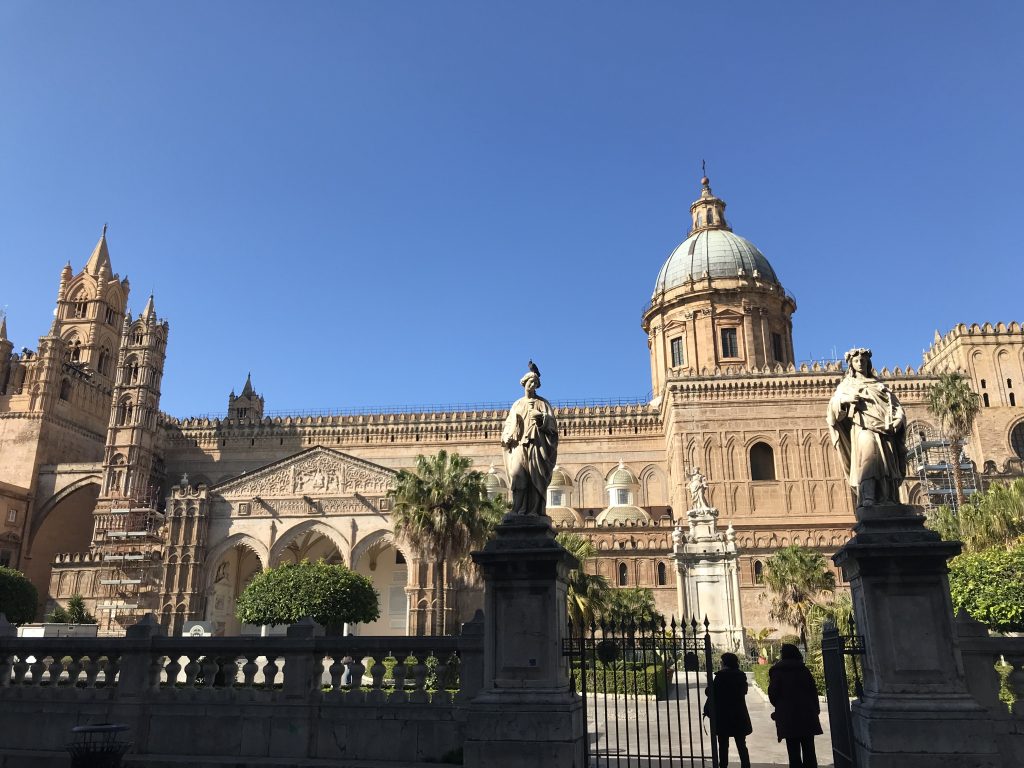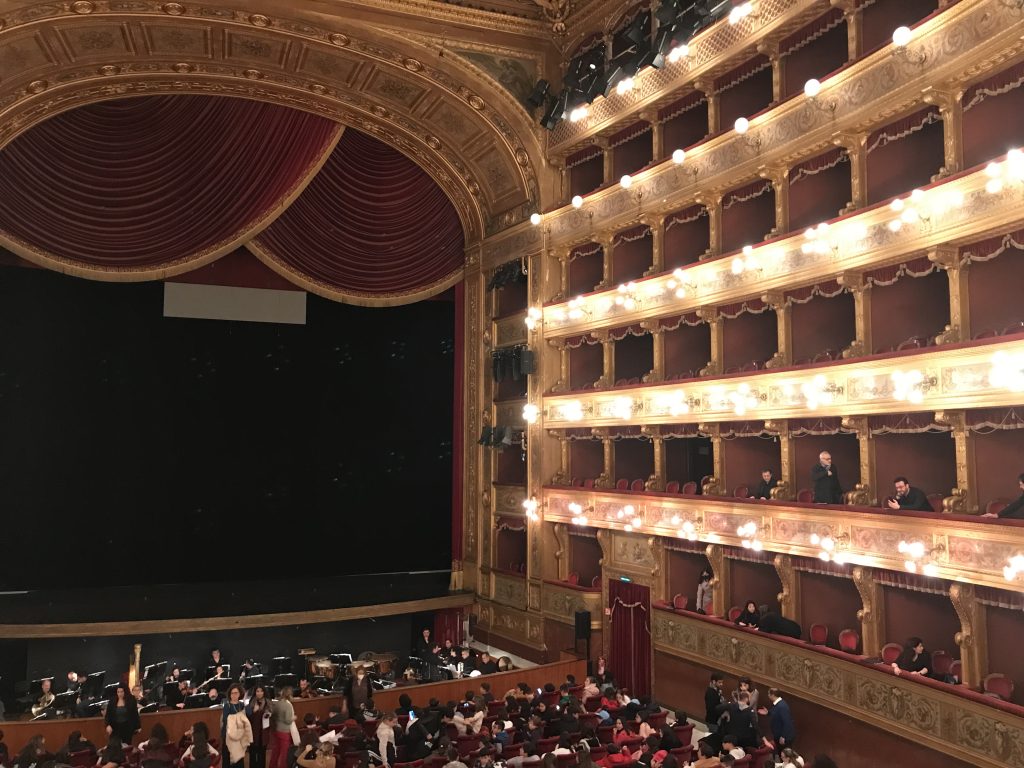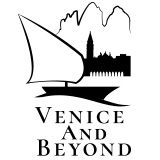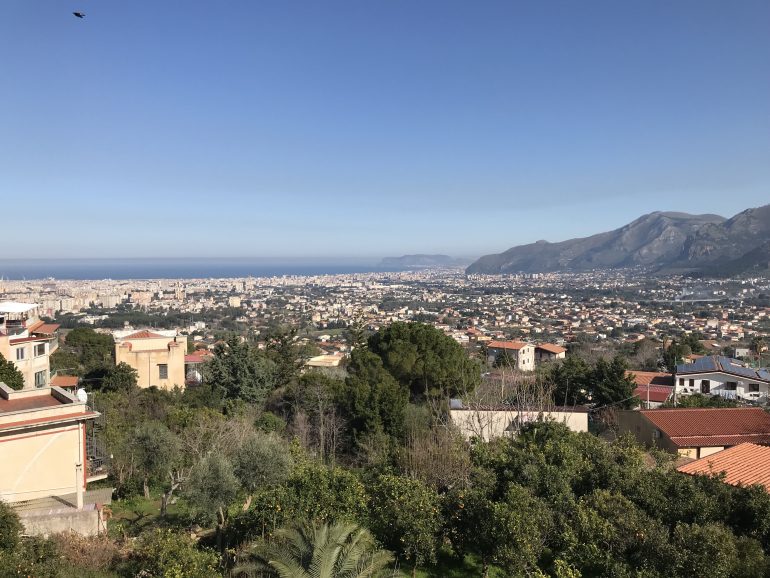I love early flights: arriving at the beginning of the day in a new place. You feel full of expectations and with all the time to disclose them. The Falcone-Borsellino airport , named upon the 2 judges killed by the mafia in 1992 is build in front of the Tirrenian see, in Punta Raisi.
We are welcome by a cloudy sky, but it doesn’t last. During the 50 minutes trip to the center of Palermo the sun wins over the clouds and we arrive in the city with a beautiful blue sky. It’s a 3 days tour and me and my girlfriends decide to have a good balance between city life, churches and museums. Happy with our rented flat, located in the heart of the old city in the historic area called Kalsa, we leave our luggage and get ready for our adventure.
If I had only one word to describe Palermo (and in someways all Sicily) is contrasts. In every street, every square, every corner you can admire beautiful buildings side by side with dirt, ruins and abandoned houses covered with graffiti. You can love or hate, and it a feeling that lasts. I love, and I think the reason of that is the people who live there; Palermo is a cultural melting pot since antiquity. Phoenicians, Greeks, Romans, Arabs, Franco-Normans and Spaniards settled here along the centuries. The signs of those influences are everywhere. In the old jews district the names of the streets are trilingual: Italian, arabic, yiddish. In the historical markets of Il Capo, Vucciria and Ballarò that are a copy of any market in North Africa. And in every church, public building or private house in the city center where you can spot bribes of different styles and tradition, byzinatine, arabic, norman.
The beauty is imposing, as they found a way to melt without crash, leaving trace of each different culture in a poetic way.
But Sicily uniqueness is also about food. A sapient mix of all the tradition who settled in the island.
Street food here is amazing. Fish seafood and vegetables are kings, but if you are braver than me, you can taste the traditional sandwiches stuffed with spleen of veal that Sicilian students eat for lunch. And of course, the arancine, the delicious fried rice balls filled with peas and meat or the ‘burro’ ones with bechamel sauce with cheese and ham. And one of my favorite, the panelle, crisp fried chickpea fritters on soft sesame-seeded buns.
Palermo host more then 220 churches, it’s difficult to make a choice. We visit the Monastero di Santa Caterina with its delicious pastry shop, the 12th-century cathedral, built at the height of the Norman domination, of course; and, in the same area, the Palazzo Dei Normanni, with its astonishing
Palatine Chapel, consecrated on Palm Sunday, 28 April, 1140, and inscribed on UNESCO’s World Heritage List. An incredible experience.
The last day, in the morning, we decide to visit the Teatro Massimo Vittorio Emanuele, the third largest opera house in Europe, after Paris and Vienna. During the guided tour, we are briefly allowed to watch a immersive concert going on for a high school students group. The orchestra plays some well known operas and the choir is all around in the balconies. The tour ended, we cannot resist and ask to buy an half price ticket to see the last part of the concert. As usual in Sicily they make it easy for us and we have our moment when, sitting in the stalls, we listen the choir tune the Va Pensiero, from Nabucco of Giuseppe Verdi arriving from the royal circle all around us. Magic!
(here a representation at Teatro Massimo)
https://www.aeroportodipalermo.it/en/at-the-airport/reach-the-airport/by-bus/
https://wonderfulitaly.eu/
https://www.lonelyplanet.com/italy/sicily/palermo
https://turismo.comune.palermo.it/#
https://www.theguardian.com/travel/2019/jan/17/locals-guide-to-palermo-sicily-capital-of-culture-2018-10-tips
